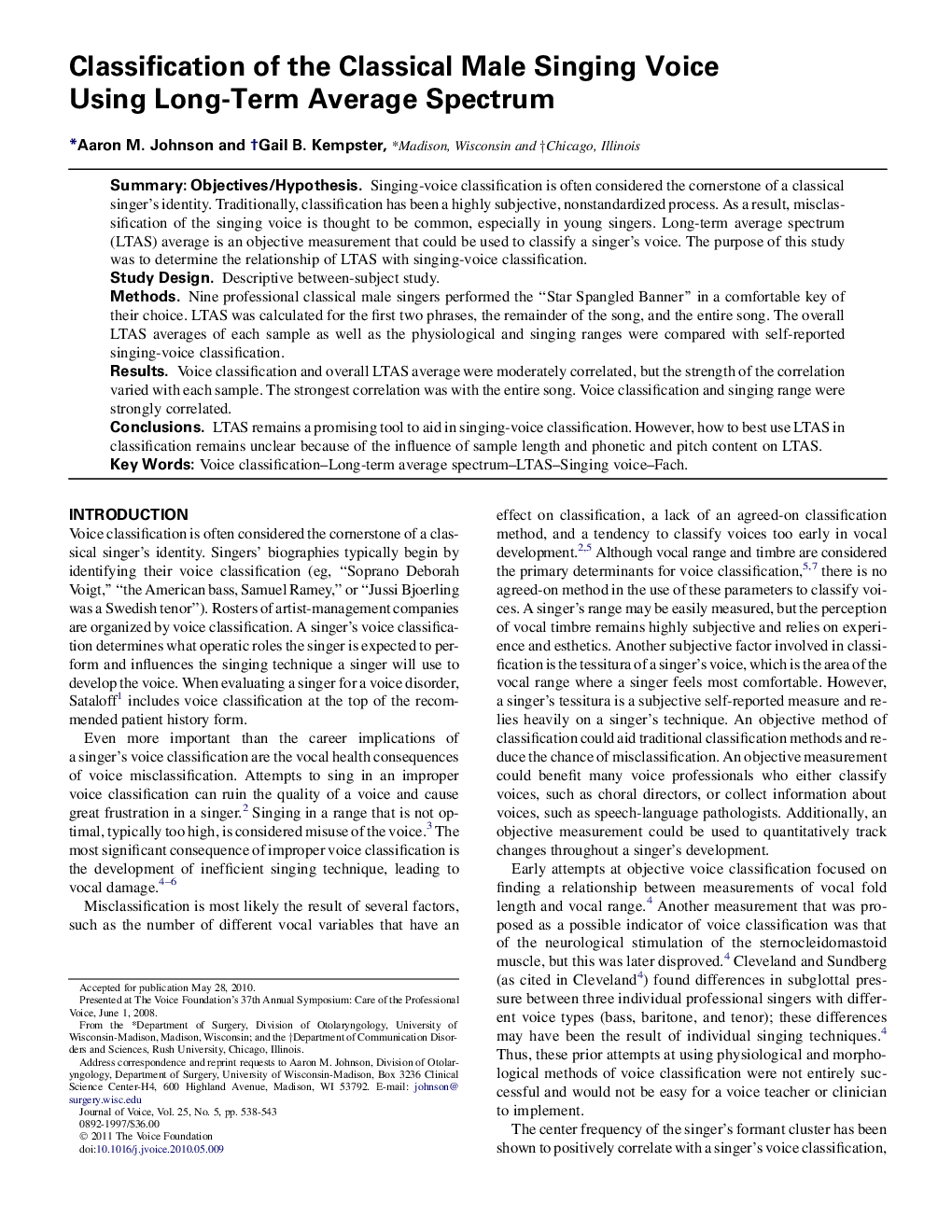| Article ID | Journal | Published Year | Pages | File Type |
|---|---|---|---|---|
| 1102396 | Journal of Voice | 2011 | 6 Pages |
SummaryObjectives/HypothesisSinging-voice classification is often considered the cornerstone of a classical singer’s identity. Traditionally, classification has been a highly subjective, nonstandardized process. As a result, misclassification of the singing voice is thought to be common, especially in young singers. Long-term average spectrum (LTAS) average is an objective measurement that could be used to classify a singer’s voice. The purpose of this study was to determine the relationship of LTAS with singing-voice classification.Study DesignDescriptive between-subject study.MethodsNine professional classical male singers performed the “Star Spangled Banner” in a comfortable key of their choice. LTAS was calculated for the first two phrases, the remainder of the song, and the entire song. The overall LTAS averages of each sample as well as the physiological and singing ranges were compared with self-reported singing-voice classification.ResultsVoice classification and overall LTAS average were moderately correlated, but the strength of the correlation varied with each sample. The strongest correlation was with the entire song. Voice classification and singing range were strongly correlated.ConclusionsLTAS remains a promising tool to aid in singing-voice classification. However, how to best use LTAS in classification remains unclear because of the influence of sample length and phonetic and pitch content on LTAS.
